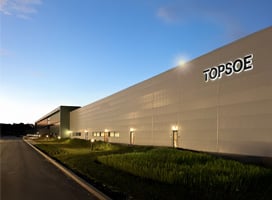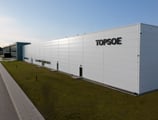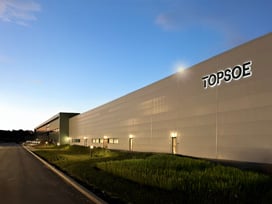A chloride absorbent
Chloride in feedstocks can pose a serious threat to ammonia and hydrogen plant productivity if allowed to poison downstream catalysts or harm equipment. Our HTG-10 chloride absorbent eliminates this risk and safeguards your operations.
Ideally positioned between your hydrogenation catalyst and your zinc oxide sulfur absorbent, the HTG-10 effectively absorbs any inorganic chloride your feedstocks might contain, thanks to its high-capacity potassium active sites and special alumina carrier.
Chloride removal across wide temperature range
An optimized chemical and structural design makes the HTG-10 uniquely capable of removing chloride under a wide range of operating temperatures. Compounding the advantages of potassium active sites and the alumina carrier, the HTG-10 features an optimized pore system that can handle approximately 10% more chloride per cubic meter of reactor volume compared to its predecessor – while also removing other halogens, such as fluorides, bromides and iodides.
Flexible and easy-to-use
The HTG-10 normally operates in conjunction with and under the same operating conditions as your desulfurization catalysts, with operating temperatures dictated by your hydrogenation catalyst (normally between 300 and 400°C).
As a plug-and-play absorbent, the HTG-10 does not require any special procedures during loading or start-up.
Maximum utilization
Thanks to its steep absorption front, the HTG-10 ensures maximum utilization of the absorbent and reactor volume – and the full benefit of effective chloride removal.
Uniform absorption of chloride, thanks to an even distribution of active sites throughout the spherical pellet, is another feature of HTG-10 that ensures full absorbent utilization. The spherical shape of HTG-10 has the additional advantage of maximizing packing density and mechanical strength, resulting in long-lasting and superior chloride removal per unit volume of the reactor.
Advantages
-
High absorption capacity
-
Flexible and easy-to-use
-
Maximum utilization
-
High mechanical strength
Technical specs
-
K2CO3: >20 wt%
-
Carrier: Alumina
-
Shape: Sphere
-
Size: 3-5 mm
-
Operating temperature range: 100–400°C
.png)









![SAF Airplane runway[1]-1 1](https://www.topsoe.com/hs-fs/hubfs/SAF%20Airplane%20runway%5B1%5D-1%201.png?width=800&height=640&name=SAF%20Airplane%20runway%5B1%5D-1%201.png)



